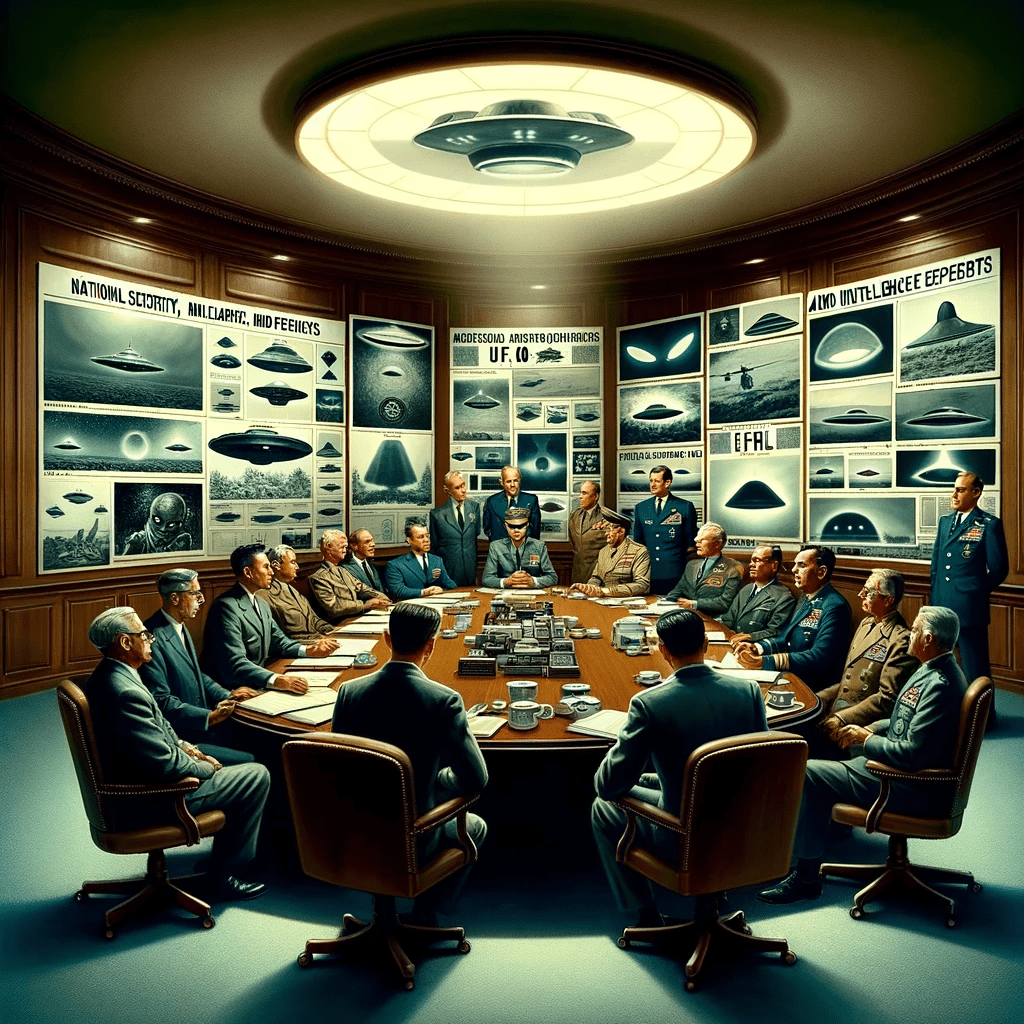Robertson Panel

The Robertson Panel was a committee formed by the United States Central Intelligence Agency (CIA) in 1952 to study the UFO phenomenon. The panel consisted of scientists, military officers, and intelligence experts who were tasked with evaluating the evidence of UFO sightings and determining if they posed a threat to national security. The panel met for several days in January 1953 and reviewed a number of UFO cases, including some of the most famous and well-documented sightings of the era.
The Robertson Panel was established as a response to the growing public concern about UFO sightings and the increasing number of reports of strange lights and flying objects in the sky. The panel was tasked with determining if these sightings were real or if they could be explained by other factors such as misidentification of natural phenomena or man-made objects.
One of the key factors that the panel considered was the potential military threat posed by UFOs. They reviewed evidence from several military personnel who reported encounters with strange flying objects and concluded that the sightings were not a result of enemy aircraft or espionage activities. The panel also considered the possibility that the sightings could be caused by psychological factors, such as hallucinations or mass delusions.
The Robertson Panel concluded that most UFO sightings could be explained as misidentifications of natural phenomena or man-made objects, such as aircraft, balloons, or satellites. They found that the evidence for the reality of UFOs was weak and that the phenomenon was not a threat to national security. The panel recommended that the government take steps to educate the public about the nature of UFO sightings and to reduce public concern about the phenomenon.
Despite the findings of the Robertson Panel, the UFO phenomenon continued to attract public attention and to generate new reports of sightings. Many people remained convinced that UFOs were real and that the government was covering up evidence of their existence. This led to the development of a vibrant UFO subculture, which included organizations, books, and magazines devoted to the study of UFOs.
In the decades that followed the Robertson Panel, the government continued to receive reports of UFO sightings, and the phenomenon remained a subject of public interest and debate. In the late 1960s and early 1970s, the U.S. government released a number of classified documents related to the UFO phenomenon, including some of the reports reviewed by the Robertson Panel. These documents helped to fuel public interest in UFOs and led to renewed speculation about the reality of the phenomenon.
Today, the UFO phenomenon continues to attract public attention and to generate new reports of sightings. While there is no scientific evidence to support the existence of extraterrestrial life or extraterrestrial technology, the phenomenon remains a subject of fascination and speculation. The Robertson Panel remains an important milestone in the history of UFO research, and its findings continue to be discussed and debated by researchers, enthusiasts, and skeptics.
The Robertson Panel was a significant event in the history of UFO research. The panel was established to address the growing public concern about UFO sightings and to determine if they posed a threat to national security. The panel concluded that most UFO sightings could be explained by natural or man-made phenomena, and that the phenomenon was not a threat to national security. Despite the panel’s findings, the UFO phenomenon continued to attract public interest, and its study remains an active area of research and debate to this day.


